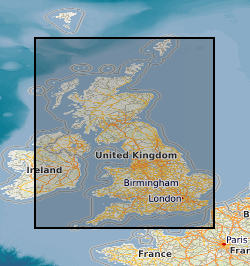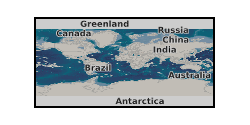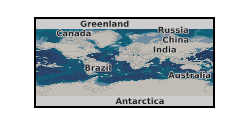Strontium
Type of resources
Available actions
Topics
Keywords
Contact for the resource
Provided by
Years
Formats
Update frequencies
-

This file documents the strontium isotope data, and the manner in which it has been processed, to supply the reference data for isotope domains of the Biosphere Isotope Domains GB (V1) map. It includes a summary of the analytical methods used to determine the isotope ratios though time.
-

Porewaters from IODP Expedition 366 were extracted from serpentinite mud volcano sediments onboard the RV JOIDES Resolution (see Fryer et al, 2017; 2018 for details). Selected samples were then analysed at the University of Southampton for 87Sr/86Sr and boron isotopes and SUERC for stable hydrogen and oxygen isotope data. The strontium isotope data has recently been accepted for publication (Albers et al., 2019 (In Press) Fluid–rock interactions in the shallow Mariana forearc: carbon cycling and redox conditions, Solid Earth special issue "Exploring new frontiers in fluids processes in subduction zones").
-

Elemental and stable isotope data measured in Eocene foraminiferal calcite from Ocean Drilling Program Site 865 and Tanzanian Drilling Project Site 18 published in Edgar et al. (2015) "Assessing the impact of diagenesis on δ11B, δ13C, δ18O, Sr/Ca and B/Ca values in fossil planktic foraminiferal calcite" in Geochimica et Cosmochimica Acta, v. 166, p. 189-209. Table 1. δ18O and δ13C values for glassy and frosty foraminifera from TDP Site 18 and ODP Site 865, respectively. Table 2. Sr/Ca and B/Ca values, and test weights for glassy and frosty foraminifera from TDP Site 18 and ODP Site 865, respectively. Table 3. δ11B values for glassy and frosty foraminifera from TDP Site 18 and ODP Site 865, respectively.
-

A worldwide compilation of 14,261 analyses of Nd, Sm, Rb and Sr concentrations, and Nd and Sr isotopes, in crustal rocks with a range of crystallisation ages. These data were used in Dhuime et al. (2015, Nature Geoscience 8, 552-555) to calculate the variation in the 'time integrated' Rb/Sr ratios of the new (i.e. juvenile) continental crust as a function of its Nd model age of formation.
-

Strontium/calcium, magnesium/calcium, lithium/calcium and boron/calcium ratios of 107 aragonite samples precipitated in vitro using a pH stat titrator using the constant composition technique between August 2020 and April 2022. Measured seawater pH and dissolved inorganic carbon concentrations (DIC) are used to estimate the seawater aragonite saturation state (O) of each precipitation. Aragonite precipitation rates are estimated from the rate of titrant dosing. The trace element contents of the solid produced in the experiment was corrected for the composition of the seed used as a surface for aragonite growth. Seawater [Sr], [Mg], [Li], [B] and [Ca] were also measured and seawater [B(OH)4-] is estimated from total seawater [B] and pH. Data were collected to determine how changes in the calcification fluids of calcareous organisms affect aragonite precipitation. Data were collected by Cristina Castillo Alvarez and Ed Hathorne and interpreted by Cristina Castillo Alvarez, Nicola Allison, Adrian Finch, Kirsty Penkman, Roland Kröger, Ed Hathorne and Matthieu Clog.
 NERC Data Catalogue Service
NERC Data Catalogue Service